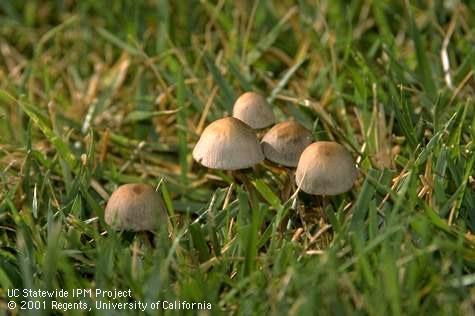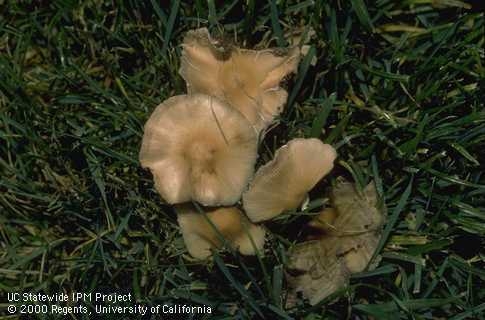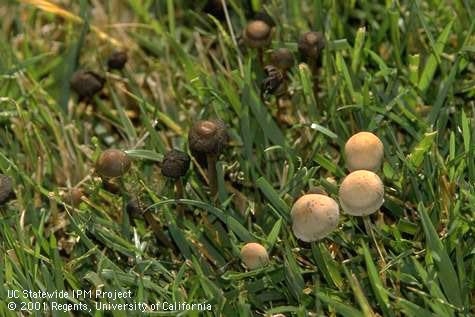If mushrooms or toadstools have suddenly appeared up in your yard, you are probably wondering why, and what you can do about them.

Following a substantial rain after a long dry spell, or rapid warming in the spring, fungus spores will begin to grow. Germinating spores send out microscopically fine, root-like filaments, which can eventually clump together underground to form masses called mycelia. Sometimes, if you dig into the ground, these mycelia will be visible as white or dark thread-like masses. They are considered beneficial, because they break down and decompose wood, fallen leaves, grass clippings and other organic material to add useable nutrients to the soil. Worldwide, underground fungi are one of the most important natural soil-building organisms.

It is an ancient, often beautiful process, but problems arise when the mushrooms collapse and begin to decompose, leaving a slimy, sometimes stinking residue in lawns. Furthermore, many such wild toadstools are poisonous if eaten, especially to small children or house pets.
Because toadstools are only the fruit of the fungi, removing them will not get rid of the underground mycelia from which they grow. But picking them will prevent them from ripening and spreading even more spores throughout the yard. Picking them, and disposing of them, will remove the poison danger to kids and pets. Regular mowing usually accomplishes this with little or no extra effort.
Trying to excavate the underground mycelia from the lawn would be useless; even if the soil were dug out and replaced, the next gentle breeze would carry replacement spores from a neighbor's yard, from a farm on the other side of town, or from the next county, and the process would begin again. There is no point in trying to poison the mycelia with massive doses of fungicide, because the doses required could well be more toxic than the mushrooms themselves and they are generally ineffective.

UC Master Gardeners of Butte County are part of the University of California Cooperative Extension (UCCE) system. To learn more about us and our upcoming events, and for help with gardening in our area, visit our website. If you have a gardening question or problem, email the Hotline at mgbutte@ucanr.edu or leave a phone message on our Hotline at (530) 538-7201. To speak to a Master Gardener about a gardening issue, or to drop by the MG office during Hotline hours, see the most current information on our Ask Us section of our website.